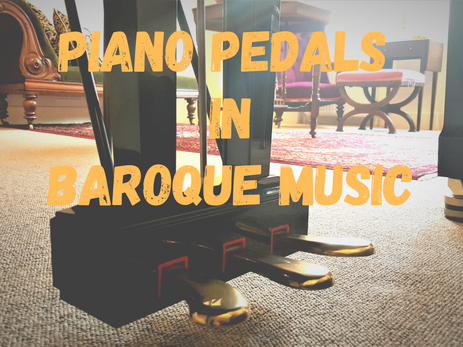Uncategorized
Is It Possible to Use the Pedals in Baroque Keyboard Music?
There are many contradictory views on whether we can adapt the earliest Baroque period (including the early classical works of Mozart and Haydn) to the modern piano with its sustaining capabilities.
For many musicians, the fact that an instrument supported by an iron frame can easily sustain notes just with the fingers is sufficient. Given that the pieces were originally written for the clavichord or harpsichord, their sustain was very limited, so very often the pieces could only make more use of shorter notes instead of longer ones.
Pedals did not exist back then.
The main argument against using the pedal is for historical reasons: “pedals did not exist at that time”. Those who advocate using the pedal might say, “we need to adapt to a modern piano”. Both points are valid, but they can also be refuted.
After Cristofori built the first gravicembalo col piano e forte in 1709, the use of leather-covered hammers with larger strings and harmonic caps developed. Thanks to the subsequent modifications by Silbermann and Zumpe, the first pianoforte grew in sonority and quickly spread throughout Europe.
Originally, dampers came in the form of hand stops (similar to the idea of the organ). This became impractical for hand use, so a knee lever emerged in Germany around 1765. These devices sustained the sound in a more selective way, such as sustaining the highs or lows. Beyer in London, in 1777, introduced a split-foot pedal to help with selective dampers. Throughout the 1780s, Broadwood in London and Erard in Paris further developed the use of the pedal.
In 1825, Alpheus Babcock invented the iron frame that made greater sustained tone possible.
Taking JS Bach as an example. Bach’s years extended from 1685 to 1750. For most of these years, we can clearly see that the possibility of using sustain in pieces existed during his lifetime.
However, the sustain was weaker but could sustain selected notes. We can compare this with the middle pedal (sostenuto) that we use in modern pianos today. However, these did not appear until the 1840s by Boisselot and Sons in Marseille.
Regarding the left pedal ‘una corda’, Cristofori introduced the muted effect of playing a single string in 1726. The use of this effect became more prominent in the 18th and 19th centuries, well-known to composers like Beethoven.
With the existence of sustaining capability and the ability to alter the tone, why was this completely separated from Bach’s style? We know the great sustaining power that an organ can create with its many stops to change the sound. Bach was aware of this, being an organist himself.
If we argue that we cannot use the pedal because “it did not exist”, then we could promote the argument to say that Bach’s music should not be played on the piano.
We have historical evidence to say that the idea of sustain existed. It is true that the Baroque style in general aimed for clarity of the contrapuntal parts, particularly in keyboards and orchestral music. The use of sustain with the right pedal would cause the loss of this clarity where it is important.
In Bach‘s time, creating a continuous legato on keyboards and organs depended solely on the fingers. However, there was a pedal keyboard that could be coupled to the clavichord or harpsichord. The strings could be played with both pedals and hands. It was also used by organ students for practice. It couldn’t be heard well from a distance, so it was ideal for avoiding disturbing other people outside. This was nicknamed the ‘dumb spinet’. This was the closest to using our modern middle pedal
Autor: Anthony Elward

